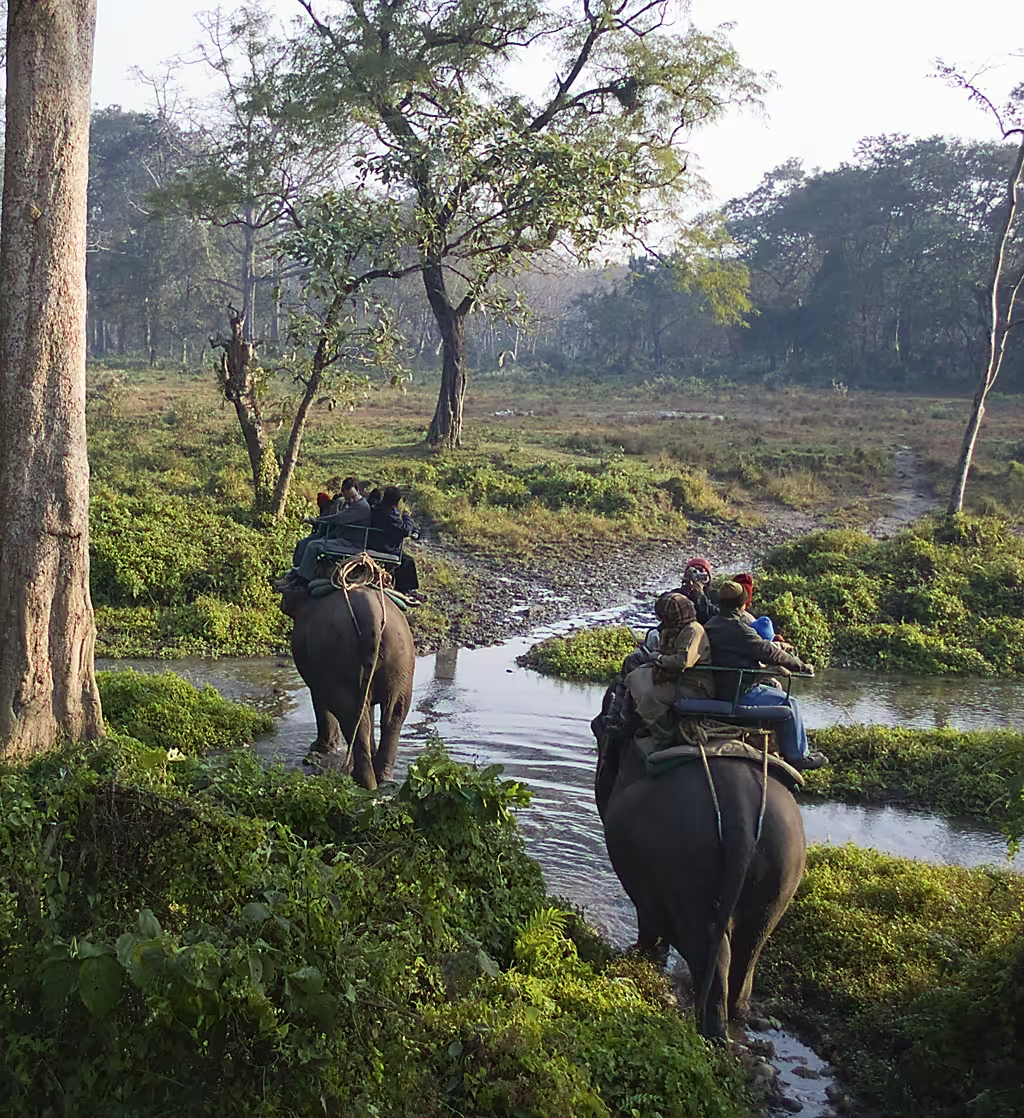Introduction
Every year, nearly 1 million animal and plant species risk disappearing because of human actions, making this one of the worst times for extinction in history. But there’s good news: eco-tourism has become a way for people to help protect these species while enjoying them in their natural homes.
When done responsibly, eco-tourism can play an important role in conservation by providing funds, raising awareness, and directly supporting efforts to protect endangered species.
Financial Support for Conservation Efforts
Eco-tourism brings in steady money for conservation through park entry fees, donations, and eco-friendly accommodations. Visitors often pay extra to visit protected areas, and this money directly helps preserve wildlife and protect their habitats. Hotels and camps that follow sustainable tourism practices often give part of their profits to conservation projects, helping to fund activities like patrolling and maintaining park infrastructure. This helps prevent poaching and reduces conflicts between humans and animals.
A well-known example of eco-tourism helping conservation is Rwanda’s mountain gorilla program. Volcanoes National Park draws thousands of tourists each year who pay for the chance to see mountain gorillas in the wild. The money from permits—up to $1,500 per person—supports anti-poaching teams, local jobs, and habitat restoration. A large part of this income also goes back to local communities, which reduces the need for poaching and encourages community support for conservation. In Kenya, the Maasai Mara National Reserve uses eco-tourism revenue to fund protection and monitoring programs for endangered species like lions, elephants, and rhinos.
Research shows that eco-tourism can have a huge positive impact on conservation in places with a lot of biodiversity. For example, Rwanda’s gorilla tourism brings in over $100 million each year, helping the government fund anti-poaching operations and invest in local communities. In Kenya, tourism income covers a large part of conservation budgets, with around 15% going directly to wildlife protection. The United Nations Environment Programe (UNEP) says that the global eco-tourism industry, worth $600 billion, is now an important economic driver for many countries with high conservation needs. This financial support ensures that conservation projects can continue to protect vulnerable species and their habitats.
Raising Awareness and Changing Attitudes
Eco-tourism offers a hands-on, educational experience that teaches visitors about the importance of protecting endangered species and the threats they face. Guided tours help tourists understand issues like habitat loss, climate change, and poaching. Many eco-tourism destinations focus on local ecosystems, explaining how each species contributes to the environment. For example, visitors in Costa Rica might learn about how jaguars control prey populations, or tourists in Thailand may discover the dangers faced by Asian elephants due to habitat destruction. This experience creates a personal connection with the animals, often inspiring visitors to support conservation long after their trip. Studies show that eco-tourists are more likely to donate to conservation efforts and adopt eco-friendly habits back home.
Eco-tourism also helps local communities get involved in conservation by providing stable jobs, such as guides, rangers, and staff in eco-lodges. These jobs encourage people to protect natural resources and wildlife. Eco-tourism businesses often involve local communities in decision-making to ensure the benefits of tourism are shared. In Nepal, for example, local communities around Chitwan National Park are trained and employed as guides and park staff, which directly benefits wildlife protection and habitat conservation. When communities have a stake in eco-tourism, they are more likely to support conservation, as they see how protecting the environment and species can help their livelihoods.
In elephant conservation efforts in Africa, employing local guides has improved community attitudes towards conservation. In Amboseli National Park, Kenya, eco-tourism provides jobs for local Maasai people, who work as wildlife guides and trackers. These guides educate tourists on the importance of protecting elephants while also learning about sustainable practices themselves. In Namibia, community-run wildlife management programs have created jobs and helped reduce poaching by involving the community in monitoring wildlife. These examples show how eco-tourism can change how people view endangered species, helping them see these animals as valuable assets to their community rather than just resources.
Scientific Research and Conservation Programs
Eco-tourism helps support scientific research by funding and providing opportunities to collect important ecological data. Through eco-tourism activities, researchers can track animal populations, study their health, and observe their behavior in the wild. Many eco-tourism operators work with scientists to gather information about endangered species. For example, guided tours in Madagascar’s rainforests help researchers monitor lemur populations, and diving trips in the Great Barrier Reef allow scientists to track coral health. These studies are essential for understanding changes in species numbers, identifying health threats, and learning how animals interact with their environment. Data collected over time helps scientists spot trends and measure the success of conservation efforts.
Eco-tourism areas often partner with universities, research institutions, and conservation groups, creating a team effort for wildlife conservation. These partnerships give scientists access to biodiverse eco-tourism sites where they can conduct long-term studies on endangered species. Many eco-lodges and protected areas in Costa Rica, for instance, collaborate with institutions like the University of Costa Rica to study species like jaguars and macaws. In South Africa, Kruger National Park works with global research teams to study elephant migration and behavior, with funding from eco-tourism. These partnerships make it possible to collect valuable data, while eco-tourism businesses benefit from scientific knowledge, which can be shared with visitors and used to improve conservation practices.
Research at eco-tourism sites has led to important conservation results. The Galápagos Islands, a popular eco-tourism destination, show how data-driven conservation can succeed. Scientists monitor marine species, coral health, and the impact of tourism, working with local and international research organizations. The data collected has influenced policies like fishing rules and controlled visitor numbers, which help protect the island’s fragile ecosystems. Similarly, eco-tourism in Raja Ampat, Indonesia, supports research on reef health and species diversity. Findings from these studies led to the creation of marine protected areas, reducing harmful activities like overfishing and reef damage. These examples show how eco-tourism can play a key role in advancing conservation science and shaping strategies to protect biodiversity.
Minimizing Human Impact and Ethical Wildlife Encounters
Good eco-tourism follows strict rules to reduce human impact on wildlife and delicate ecosystems. These rules often include limiting access to sensitive areas, setting safe distances for viewing animals, and controlling group sizes to minimize noise and disturbance. For example, in Tanzania’s Serengeti National Park, vehicles must stay on specific paths to avoid harming plants and disturbing animals. In Costa Rica’s Monteverde Cloud Forest, some trails are off-limits to prevent damage to the area’s biodiversity. By limiting where tourists can go and how close they can get to animals, these rules help keep the environment natural, allowing animals to behave freely without interference.
Ethical eco-tourism focuses on observing wildlife without disturbing them or their habitats. It encourages non-invasive encounters that allow animals to remain undisturbed, which is especially important for sensitive species. For example, many whale-watching tours in places like Iceland and Canada follow rules that require boats to stay a respectful distance from whales and slow down to avoid stressing them. Responsible eco-tourism also discourages actions like feeding or touching animals, as this can upset their natural diets, make them dependent on humans, and even cause health problems for both animals and people. By promoting respectful observation, eco-tourism teaches people to appreciate animals by seeing them in their natural environment.
The Galápagos Islands are a great example of eco-tourism practices that protect delicate ecosystems. Strict rules control every aspect of tourism, including visitor numbers, where tourists can land, and which trails they can use. Tourists are not allowed to bring certain foods to avoid introducing harmful species, and licensed guides make sure visitors stay on marked paths and keep a safe distance from animals like marine iguanas and blue-footed boobies. In Antarctica, eco-tourism rules protect penguin colonies and fragile landscapes by only allowing tourists to visit specific areas under strict supervision and following strong biosecurity measures. These examples show that well-enforced eco-tourism rules can protect biodiversity while still allowing people to experience amazing natural places.
Conclusion
Eco-tourism offers many benefits for protecting endangered species. It provides funding through park fees and donations, raises awareness through educational experiences, and supports scientific research to help create better conservation strategies. Eco-tourism also follows ethical practices and strict rules to make sure wildlife encounters don’t disturb animals, allowing them and their habitats to thrive even with more human visitors.
If you can, consider eco-friendly travel options that support wildlife conservation. If travel isn’t possible, you can still help by donating to trusted conservation groups or spreading the word about endangered species.
When done responsibly, eco-tourism has great potential to protect endangered species for future generations. By making thoughtful choices, both travelers and supporters can help create a future where biodiversity is cherished and protected.
Share the knowledge with

